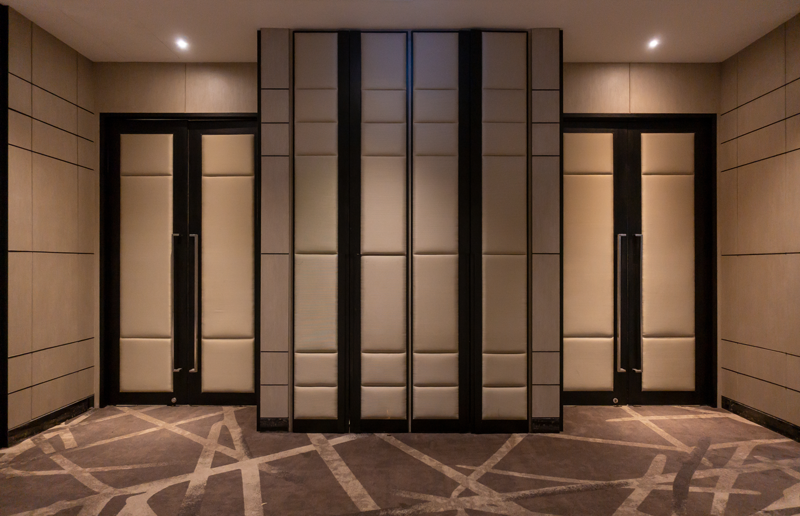
Acoustic Panels and what we learnt from Bugatti.
Home theatres are now more popular than ever post the Covid-19 era. People needed a "safe" environment to watch their favourite movies reminiscent of "the good old days" when going to a movie was a way to unwind, kick back or start off a great evening. With all the current streaming options available it just makes sense. The latest box office Hollywood movies are now just a click away.
A home theatre adds great value to a home and creates a space for families to enjoy quality time together, something we all need since our smart phones seem to get more attention than our siblings or parents!
You might be busy building your home cinema right now, maybe you ordered some speakers and an AV receiver from a popular HiFi store. Maybe you saw companies advertising cinema acoustic paneling and you choosing colours and shapes for the final fitment.
But have you every contemplated how important this really is? Well, let us tell you from experience, it's as important as your speaker selection! There's a particular science and methodology that goes behind selecting the correct materials and placement of panels. Although science can you get you good results, it's experience that will get you great results.
At Cinema Architects, we've been building high end home cinema's in South Africa longer than anyone else. We are the distributors of premium equipment such as Genelec speakers and Acurus amplifiers. We've won international awards for design and technical excellency as recent as 2021.
But what really sets us apart is that we have experts in all fields, in-house. We conceptualise, design and execute all aspects ourselves. Therefore how the room is going to sound is thought of before the first brick is ever laid. Every aspect is considered right from the inception.
Our team consists of experts with international training from HAA (Home Acoustic Alliance) and CEDIA (Global Association for the Home Technology Industry.) This expert training is essential when developing a home cinema.
Installing acoustic paneling requires a deep understanding of the physics of sound and how it reflects. Not having an expert design and install your acoustic paneling can actually make your cinema sound worse!
This is why the acoustic paneling needs to be designed right from inception.
Allow us to offer an example. When Bugatti developed the Veyron they knew this car was like no other, it would achieve speeds like no other road car, and would brake harder than any other road car. For this reason they included Michelin in the design phase, right from the start. Michelin designed a tyre bespoke to that car so it could achieve what Bugatti said it would. Enter the Michelin Pilot Sport PAX, a tyre that has to be glued onto the rim! A tyre that didn't exist before the Bugatti Veyron.
Now imagine Bugatti built this car, and then went shopping for a tyre, only to find out a tyre didn't exist to let this car achieve its mammoth numbers?

This is how we feel about adding acoustic paneling to a home cinema, there is no off the shelf or after the fact product that can achieve what we need it to achieve, it has to be thought of consecutively from inception, this is what we do, and this is our difference.
I guess what we saying is don't make a mistake, don't build your home cinema like lego blocks and just put it what fits. Treat yourself to a bespoke home cinema, one with careful thought and consideration for every audio visual aspect. The nett result of this is pure auditory bliss.
What are Acoustic Panels?
Acoustic panels are sound absorbing (or reflecting) panels which are generally made of wool or foam, but not exclusively, we also use other materials that have been tested over the years.
Sound waves easily bounce off of hard surfaces, just like a bouncing ball if you will. This softer material helps to dampen any extra echoes and reduce the number of waves rebounding throughout a room.
The ultimate purpose of an acoustic panel is to control the Reverberation Time (RT) in a room. This RT can be different depending on the configuration of the room. For instance, in areas where complete silence is important (such as a library), more panels would need to be installed which have more absorbing properties, whereas having fewer panels in a home theater can help to control the sound – rather than muffle it entirely.
Acoustic panels have an NRC (Noise Reduction Coefficient) rating which measures how much of the sound it will absorb. The NRC rating is equivalent to the amount of sound that the panel will absorb.
For instance, an NRC rating of .60 means that it absorbs 60% of the sound and reflects 40% back into the room. Generally, the thicker the panel is, the higher NRC rating it will have, but not necessarily.
However acoustic panels do not just absorb sound and muffle the reverberation; they also diffuse the sound so it creates a pleasant listening experience. If the panels absorb too much sound and there is no echo or reverberation, it creates a “dead” space – which is quite unpleasant when you are trying to enjoy a your favourite blockbuster.
Diffusion helps to reflect some of the sound back into the room so that it sounds natural without interfering and creating a muffled noise. This helps to create a more immersive, “surround sound” experience in a smaller home theater space.
While acoustic panels are used to absorb harsher sounds of mid-range and high frequencies, bass traps are made for low frequency sound muffling, such as bass drums, thunder, or other deep, low sounds. These kinds of sounds are widely used in horror and thriller films as they create a rather unsettling noise – which adds to the eeriness or tension of a scene.
Failing to install panels specifically for this type of sound can create a lot of reverberation and make it difficult to hear noises other than the bass. This is a critical area where inexperienced installers are most likely to fail, designing a bass trap that works is complex and intricate.
But where do you place the acoustic panels?
The acoustic panel placement and positioning can have an incredible impact on the sound absorption quality. Putting them in places where sound does not naturally reflect will essentially render the panels useless, and in fact can make a home theatre sound worse. You need to find reflection points for optimal placement planning. This comes with years of experience and takes an expert to work out the suitable locations. This is why our team has been so highly trained.
The first reflection point in a room is the area where the most disruptive echoing occurs. It is commonly the primary surface that a sound wave contacts coming out of the speaker.


